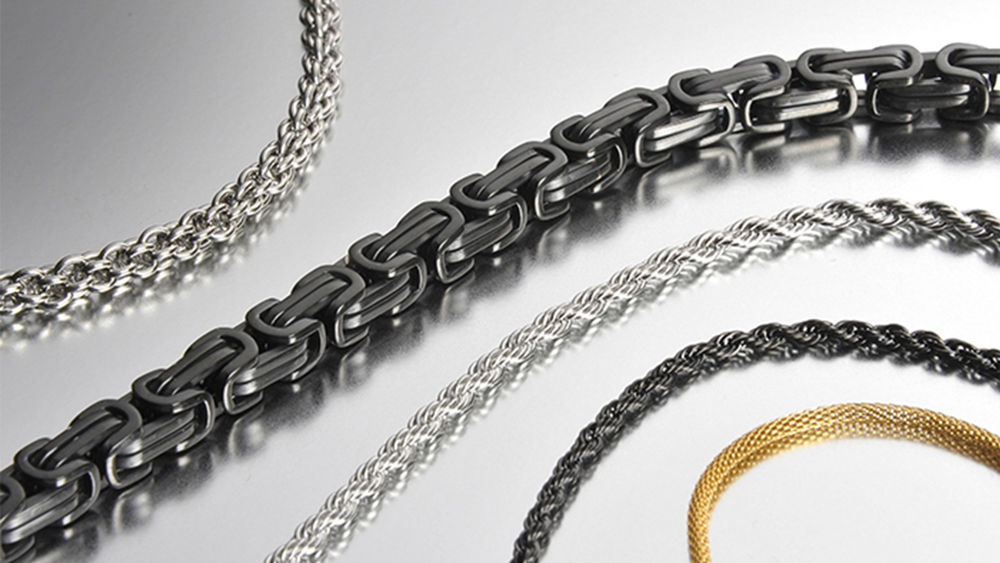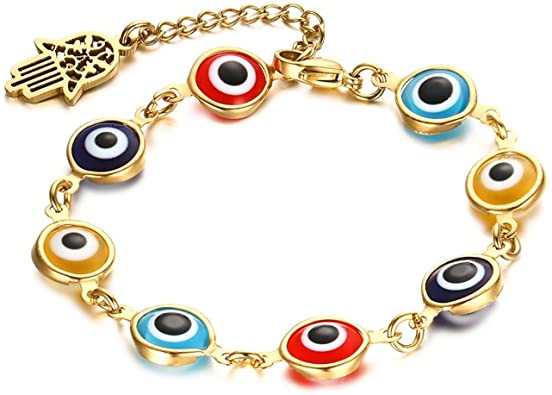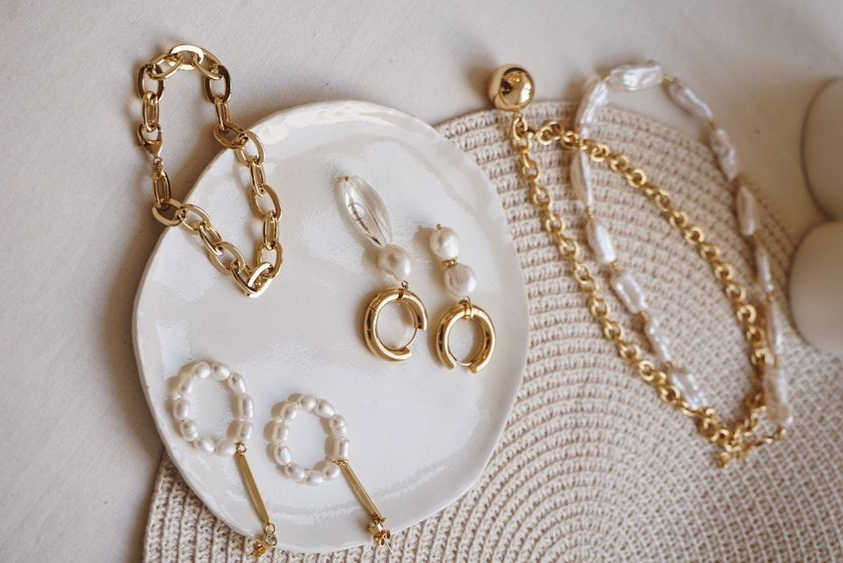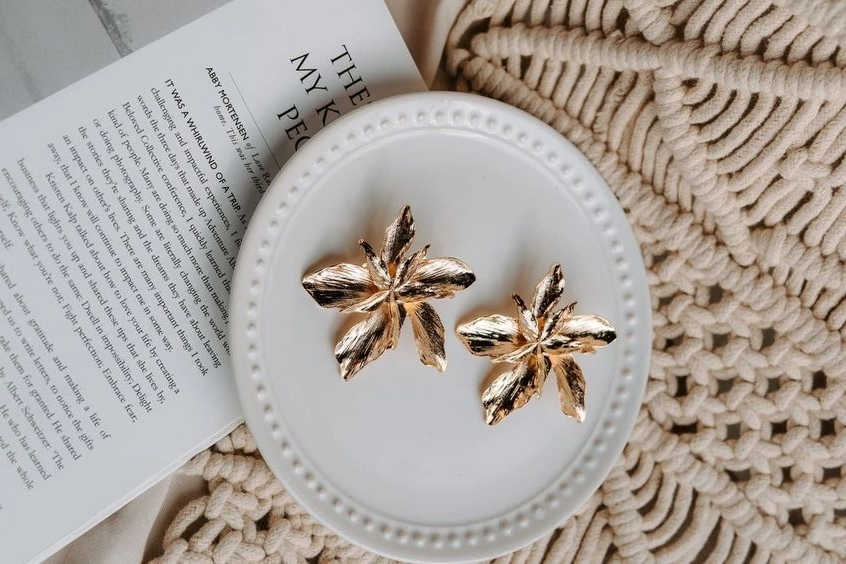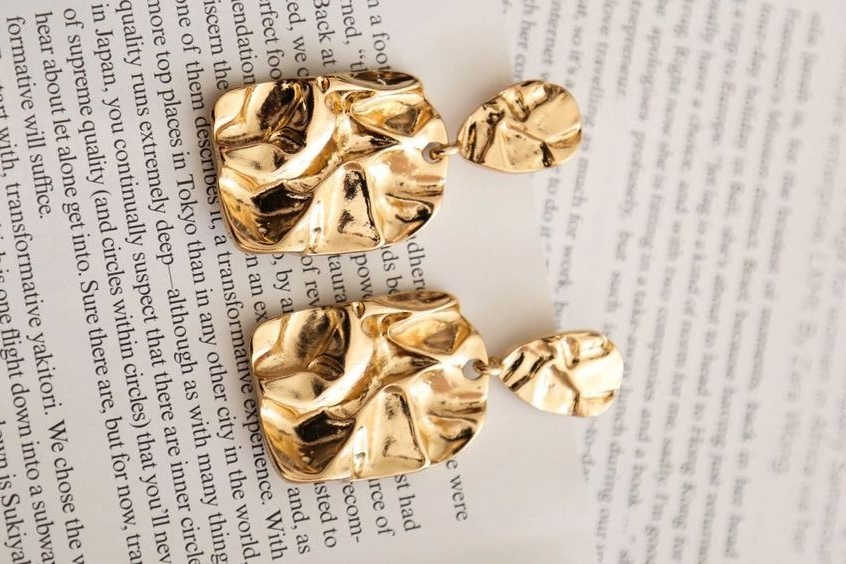Is stainless steel hypoallergenic?
Stainless steel is hypoallergenic. There are over 150 grades of stainless steel. Its strong doesn’t tarnish, can be polished easily, and is of great value. Jewelry in stainless steel is commonly made from 316l or 316lvm and is often called medical or surgical stainless steel as it doesn’t react to the skin for most people.
| Stainless Steel | Stainless Steel Characteristics |
| 304 stainless steel | It’s probably the most popular type of stainless steel, but you can also find it in the kitchen. However, such stainless steel contains about 10.5% nickel and carbon. The best part is that it is corrosion-resistant. However, we recommend that you do not use it if you are sensitive to nickel. |
| 304 L | Another of the most popular stainless steel metals is this alloy. Here, there is more nickel, but less carbon. Nickel is known for its durability as it is about 12%. |
| 430 | With a nickel content of less than 0.5%, this is one of the best options and is very safe for people who are sensitive to nickel. This type of stainless steel complies with EU compliance regulations. |
| 316 stainless steel | You’ve probably heard of this type of stainless steel. It is stainless steel with the perfect properties you need when using metal for surgical purposes. It is not always the finest stainless steel, but it is the safest for implants. This is ideal when you need to make body jewelry. |
| 316 L | You’ve probably heard about this as it’s one of the most common options. In many cases, the carbon content is low, but the memory of nickel is also low. Some people usually wear jewelry. |
What type of stainless steel is hypoallergenic? What are the Best Earrings for Sensitive Ears?
316L stainless steel. 316L surgical stainless steel may contain some nickel, but it’s generally considered hypoallergenic for most people. Be sure that your earring backings also are made of hypoallergenic materials.
Hypoallergenic Metals for Sensitive Skin/Sensitive Ears
Metal allergies can take a variety of different forms. Some people are only allergic to nickel, while others are allergic to copper, yet still, others may be allergic to any non-pure metal. Metal allergies often manifest as itchy skin, a rash, even blisters. For less pure metals and lesser allergies, the offending metal may simply stain the skin a green or dark grey color. Many people who suffer from metal allergies can stop their symptoms by switching to a purer metal, rather than an alloy. 24Kt Gold, Sterling Silver, and Stainless Steel are often touted as hypoallergenic metals. Let’s take a look at these and other options for hypoallergenic jewelry components.
- Stainless Steel
Stainless steel is often made of an alloy that includes steel, chromium, and often nickel. Sometimes the nickel content is too high for people with nickel allergies to wear consistently, though it does come in different grades with higher and lower carbon and nickel contents.
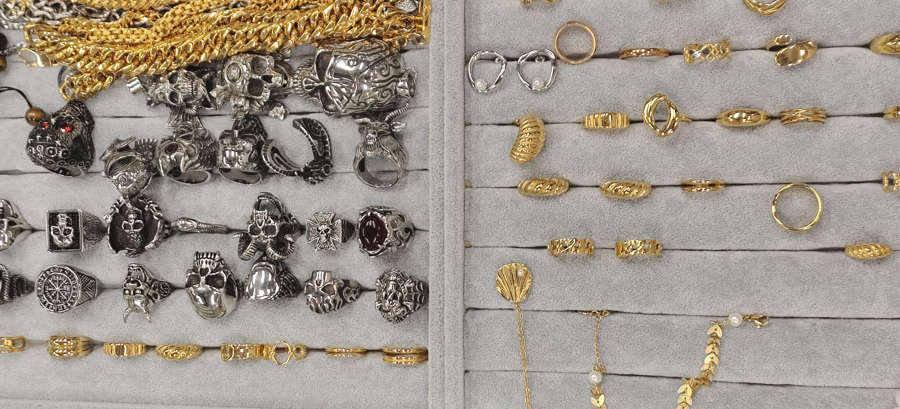
Stainless steel is used in surgical instruments, which means it is resistant to corrosives and won’t rust over time. If you are looking for the best stainless steel alloy for its hypoallergenic properties, look for XC45 Steel or 430 Stainless- they have less than 1% nickel, while 304 Stainless will have over 10%.
- Silver
It may come as a surprise, but sterling silver is actually an alloy! It is at least 92.5% silver, which is why most sterling will be marked 925. The other 7.5% is usually copper, though it may also be a nickel. Silver tarnishes easily, so it is often plated with Rhodium to keep its pretty shine. For most metal allergies, sterling silver can be a great option.
Silver jewelry findings are often found as silver-plated or silver-filled. In this case, Sterling silver is applied via heat treatment to a less expensive metal, like brass. The silver will eventually wear off, depending upon the quantity of silver. For people with less severe metal allergies, this can be a great option for many years until the silver wears away.
- Gold
Gold is found in different karat counts. 24Kt gold is pure gold- 24 out of 24 karats are made of pure gold. But this metal is very soft, oftentimes too soft for jewelry. Most often you will find jewelry components in 14kt gold, which is 14 out of 24 karats are made of pure gold. The other 10 parts are made from other metals, depending upon the color of the gold. Rose gold will be made with copper, while white gold will be made with palladium. Depending upon the wearers’ allergies, 14kt gold can be perfect to reduce allergic reactions.
May gold jewelry findings can also be found as gold-plated or gold-filled, similar to silver findings. The gold is applied to a less expensive metal by heat treatment and will last for many years before the gold eventually wears off.
- Titanium
Titanium is implant grade, medical grade, or commercially pure ASTM F-67 compliant. It is extremely lightweight and is “ideal for people with concerns about nickel sensitivity.” There are alloys of Titanium that are not medical grade or commercially pure, so you should always be skeptical of earrings labeled “titanium” without any more information. If you have questions, you should email to clarify the grade of the Titanium.
Titanium is the most bio-compatible element (less than 0.6% of people are allergic to it) and will not irritate even the most sensitive skin. Since titanium is inert and non-reactive to almost all chemicals it will never corrode, tarnish, or rust.
- Platinum
Platinum is a pure, unalloyed state. It is extremely inert (non-reactive) and therefore a good option for piercings. However, platinum is extremely expensive so it is not an affordable metal for fashion jewelry.
If it is 14k or higher, nickel-free, and alloyed for biocompatibility. Gold higher than 18k is too soft for body jewelry because it can easily be scratched or nicked. Anything less than 24k gold is an alloy, meaning that it is mixed with another metal. It is rare that a company will tell you what the alloyed metals are, and for that reason, it is risky to purchase gold earrings if you have sensitive ears.
Gold plated, gold-filled, or gold overlay/vermeil jewelry is not acceptable for sensitive ear piercings. All of these involve coating a base metal with a layer of gold. The gold surface (which is very thin—measured in millionths of an inch) can wear or chip off, leaving your piercing exposed to the reactive metal underneath.
- Niobium
Niobium is a naturally inert metal that is non-reactive to the human body. Niobium is naturally a blueish color, but it can be anodized in order to give it a gold-tone. Niobium jewelry is anodized by placing the metal in a specific solution of soap and water and applying an electrical current. Unlike typical fashion jewelry, anodized Niobium does not have any plating, coatings, or dyes; after the anodization process, it is still 100% pure Niobium which means it is still 100% non-allergenic and non-reactive. Since it is a pure metal and not an alloy, it is always nickel-free.
Since Niobium is naturally non-allergenic, and its color can be changed without adding any foreign or reactive materials, it is an excellent metal for earrings. Niobium earrings can be worn safely, even by people with a metal allergy, and do not have plating or coating that will eventually tarnish or wear away. Niobium is the perfect material for our hypoallergenic drop earrings.
Stainless steel allergy symptoms
If you use the wrong metal, you may experience common allergy symptoms. Your skin picks up some of the jewelry molecules and sends them to the lymph nodes. Now your body has to respond to the foreign invader, and that’s when your immune system starts working against it.
You may experience some itchy feelings, redness, swelling, rashes, blisters, and shedding. That’s the first reaction you’ll notice. Note that severity can vary and can be overwhelming at times.
Stainless steel may also sometimes contain cobalt and chromate, which can also cause reactions. Therefore, it is said that if you are reactive, you should stay away from low-grade stainless steel.
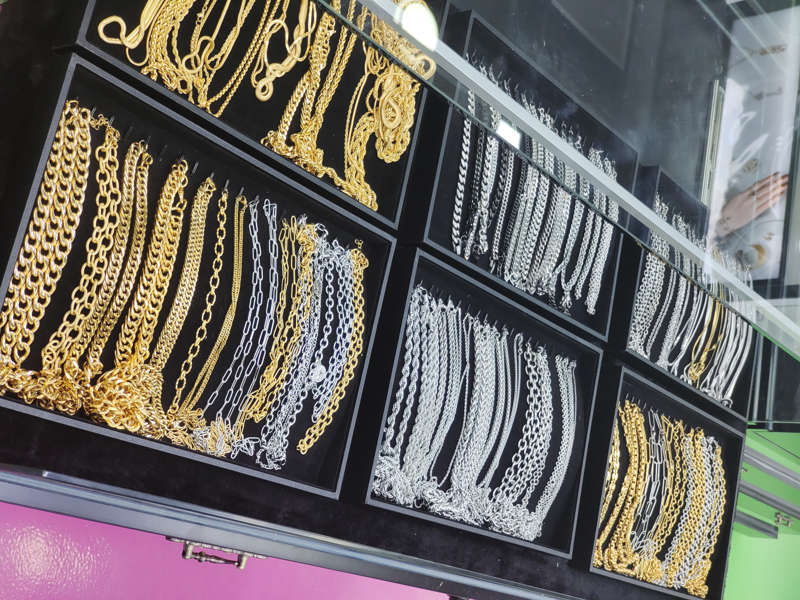
These symptoms can appear for at least 12-48 hours after wearing. Notice that it’s not always the part that’s in contact with the metal. It can be in different parts. Now that you know the symptoms, you shouldn’t panic when it happens unless it gets serious.
Stainless steel earrings allergy
Depending on the type of jewelry you buy, stainless steel earrings are generally safe. We know how exciting it feels to itch, and of course, we don’t want you to continue to itch. Therefore, you should select only those options that have the ability to use advanced options.
These options will contain little or no nickel. Therefore, you wouldn’t expect it to cause any allergic reactions. If you find yourself wearing stainless steel jewelry, there’s a good chance you’re choosing lower-quality jewelry.
If you have allergies, there’s a good chance you’re allergic to the low levels of nickel found in stainless steel jewelry. Stainless steel gemstones are hypoallergenic because they have the lowest nickel content.
In addition, the metal will never tarnish because it contains no elements that cause tarnishing. You will no longer suffer from corrosion and the elements in stainless steel will not react to your skin in any way.
Why Are My Ears So Sensitive?
If your ears get red and itchy when you wear earrings, it most likely means that you are allergic to the metal in the earring posts. The most common metal allergy people have is to nickel. According to experts, repeated exposure can even increase the risk of developing an allergy at any age.
Some people with sensitive ears can still wear any earrings for a short amount of time. However, for others, even a very tiny amount of metal they are sensitive to will cause a reaction. It all depends on your level of sensitivity.
How to Make Any Pair of Earrings Hypoallergenic?
If you have a pair of earrings that you just absolutely love but just can’t wear without getting a reaction, here are a couple of tricks that you can try to make them tolerable.
The best solution is to paint the posts with a couple of coats of clear nail polish. After the polish dries, it will create a barrier between the nickel in the earrings and your ears. You will have to reapply the polish periodically if you plan to wear them more than a few times.
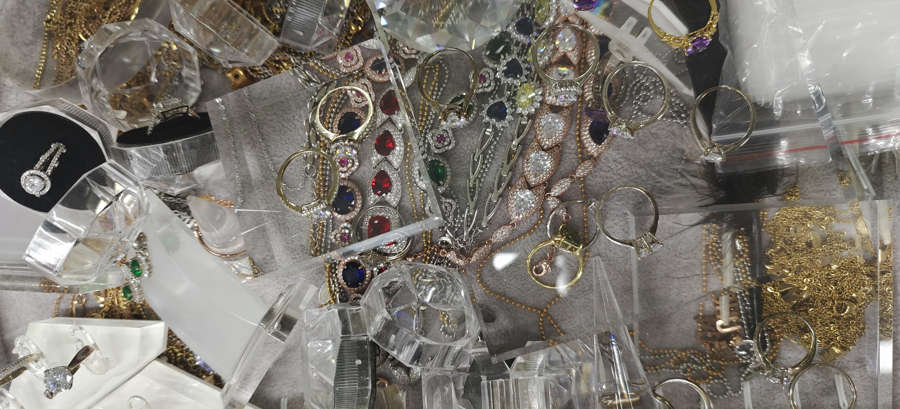
If you’re in a hurry, clean the earrings with hydrogen peroxide and then apply a couple of coats of Vaseline. Be aware, however, that this will likely only work for a couple of hours before you have to reapply the jelly again.
How to prevent earrings allergy?
How sensitive are you? If you are super sensitive to nickel, then stainless steel is not for you. However, if you experience mild reactions, you can use stainless steel. Only remember to choose the safer options.
- Make sure you know the grade
You can use stainless steel, but you also have to know the grade you are using. If you know you are the sensitive type, you can choose the higher grades silver or the surgical steel, not any other opinions. You don’t want to trigger the reaction ever, and that’s why you should make sure you are safe.
- Know what not to put next to your skin
Sometimes you may think it’s the jewel when it’s not. So, knowing what exactly you tend to react to. Maybe you may also be reacting to something else other than the stainless steel. This is why you should take your time to find out what causes the reaction to you.
- Choose hypoallergenic jewels
If you are the sensitive type, you have no choice but to make sure you’re safe. We have several jewels that indicate the hypoallergenic feature, and others don’t. So it would help if you didn’t ever buy any jewel that you presume isn’t hypoallergenic.
How to deal with earrings allergy
- Stop wearing the jewelry.
If you suspect a particular piece of jewelry is causing a reaction, stop wearing it temporarily. - Use a steroid cream.
Apply a cortisone (or another anti-inflammatory steroid cream) to the rash to help it heal. - Wear the jewelry again.
Once the rash disappears, wear the jewelry again and see if it causes another rash. If it does, you’ll know you’re allergic to a metal in that piece of jewelry.
Ten articles before and after
Does Zinc Alloy Jewelry Turn Your Skin Green?
How To Clean Stainless Steel Jewelry?
How To Clean Zinc Alloy Jewelry?
STERLING SILVER VS STAINLESS STEEL WHICH ONE SHOULD I BUY
GOLD PLATING STAINLESS STEEL JEWELRY PROCESS
50 Best Stainless Steel Jewelry Wholesale Suppliers And Websites
